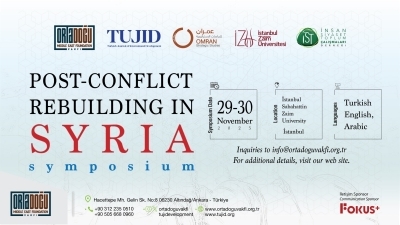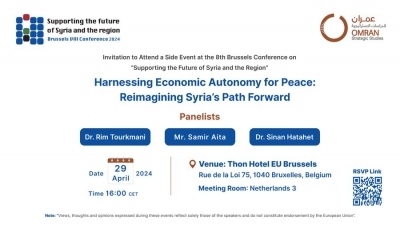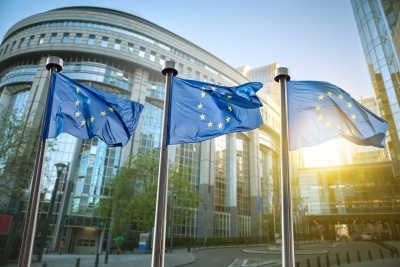Reports
Russia’s Brittle Strategic Pillars in Syria
With unreliable allies and a lack of experience with local power dynamics, Russia’s influence in Syria is built on fragile foundations
With political control fragmented among local powerbrokers in Syria, Russia’s overreliance on the Assad regime to protect its interests is a strategic threat. Despite current intersecting interests, neither the regime nor its Iranian allies are reliable partners. Competing and conflicting interests may finally come to a head once a political solution begins to take shape and Syria embarks on reconstruction, particularly in light of new regional arrangements.
Belying Vladimir Putin’s claim during his surprise visit to Syria that Russia is pulling back, these factors have in fact driven Russia to work to develop new tools that will enable it to maximize its gains and safeguard its interests in Syria.
Russian strengths and weaknesses
Russia reportedly has seven military bases housing approximately 6,000 individuals in Syria, and an estimated 1,000 Russian military police spread throughout the de-escalation zones and areas recently reclaimed from the opposition as a result of reconciliation agreements. Russia has also entrusted several private security forces with the task of carrying out special missions ostensibly in its war against ISIS and with protecting Russian energy installations and investment projects; these include the paramilitary group, ChVK Vagner, which, according to sources, has around 2,500 individuals on the ground in Syria.
But Russia realizes that it is not strong enough to guarantee its interests in Syria on its own and that it must rely on local partners to do so. Hence, Moscow is making efforts on two separate fronts. One is vertical – aiming to establish lasting influence within state institutions, particularly the military and security apparatus – by investing in influential decision makers, such as General Ali Mamlouk, director of the Baath Party’s National Security Bureau, and General Deeb Zeitoun, head of Syria’s General Intelligence Directorate, two of the most prominent security men.
The other is horizontal in nature. Russia is keen to develop relationships with local powerbrokers directly in order to build inroads with local communities with a view to balancing Iran’s growing influence within Syrian society. These relationships could be used as leverage to sway political negotiations towards Russian interests, while also recruiting them as local partners and guarantors for Russian investments.
Reaching out
The Russian Reconciliation Centre for Syria at Hmeimim Airbase plays a key role in communications with local powerbrokers; however, the communication mechanism and those responsible for it vary according to who controls the relevant areas. In coordination with the National Security Bureau, Russia has been able to engage with local powerbrokers in regime-controlled areas, including various political parties, local dignitaries and religious and tribal leaders, through Reconciliation Centre staff. It has also been able to communicate with the Kurds via military and security channels like Hmeimim Airbase and the Russian Ministry of Defence or via political channels managed by the Russian Ministry of Foreign Affairs in coordination with Hmeimim.
But Russia faces a dilemma communicating with local powerbrokers in opposition controlled areas and dealing with the influence of multiple regional actors. To overcome those challenges, it has employed several mechanisms to communicate with these groups in an attempt to co-opt them, using important political figures such as Ahmad Jarba to communicate with local leadership in besieged areas like Homs and Eastern Ghouta, and resorting to local reconciliation committees (primarily made up of local dignitaries and technocrats associated with the regime) that possess their own communication channels that can be used to communicate with the local opposition, as was the case in Al-Tel shortly before the Free Syrian Army’s withdrawal.
According to an activist from northern Homs, Russia is also very much dependent on cadres of Chechen Muslim military police, fluent in Arabic, to communicate with local leaderships. In addition, Moscow has used Track II diplomacy to network with local powerbrokers and open up back channels through relationships with regional powers.
Russia has so far employed the ‘carrot and stick’ model when communicating with local powerbrokers to ensure its influence, offering up benefits like security protection and financing, while guaranteeing them a place at the negotiating table and a share of reconstruction revenue. But based on past form, more heavy-handed measures to pressure local powerbrokers, such as making them targets of future military operations or playing on local rivals to marginalize or giving preference to one group over another in a political solution and reconstruction arrangements, remain on the table.
Enduring challenges
Although it has made strides stabilizing its military presence and legitimizing its security arm in Syria, Russia still faces challenges generating leverage within state institutions and Syrian society where Iran opposes Russia's efforts. The regime’s many centres of power, reliance on militias and weak institutions limit Russia’s efforts to consolidate its influence in the rest of Syria. Similarly, Moscow is finding it difficult to communicate with Syria’s many powerbrokers and differentiate between their demands, references and allegiances to other regional powers – making Russia’s strategic pillars in Syria all the more fragile.



